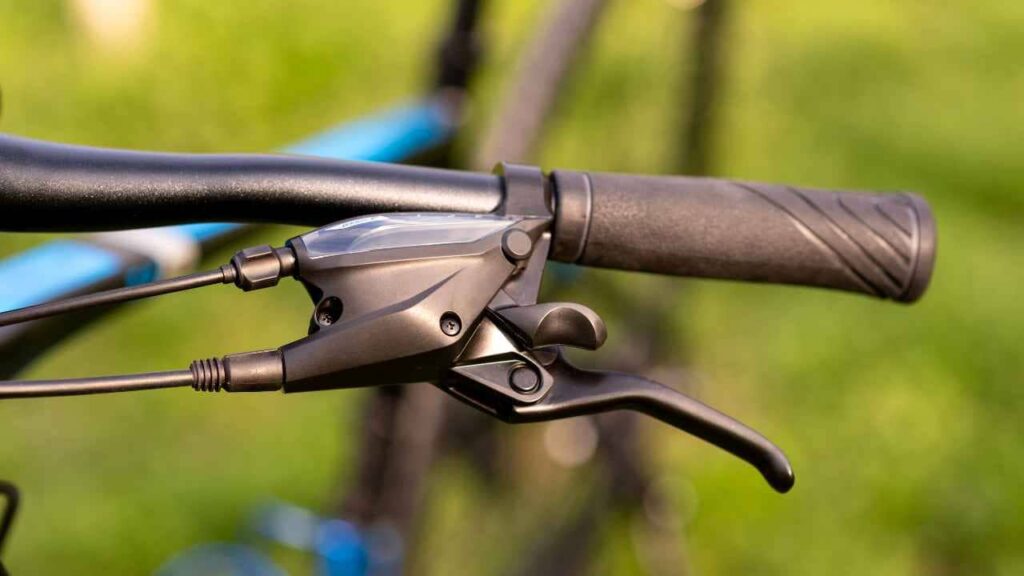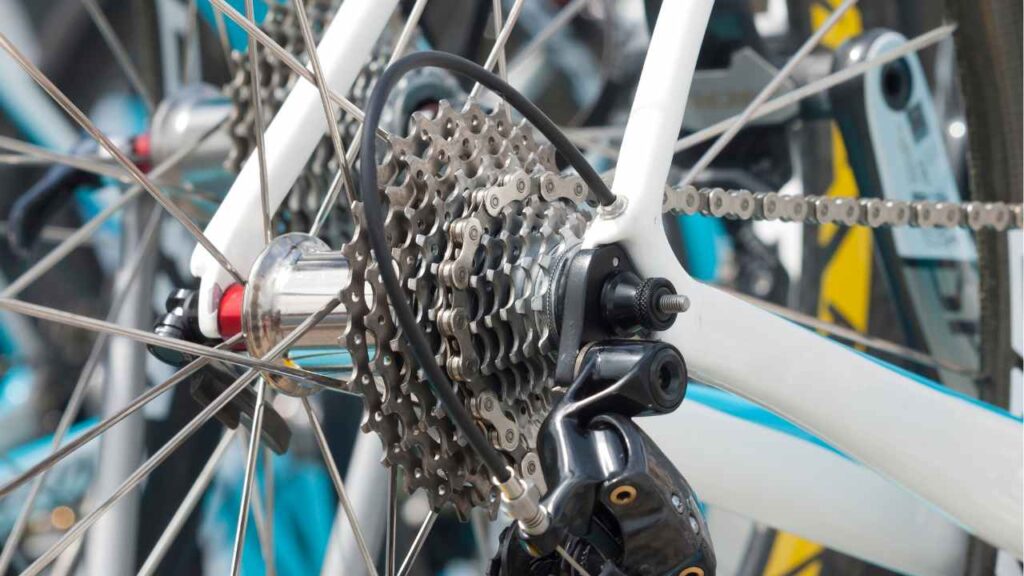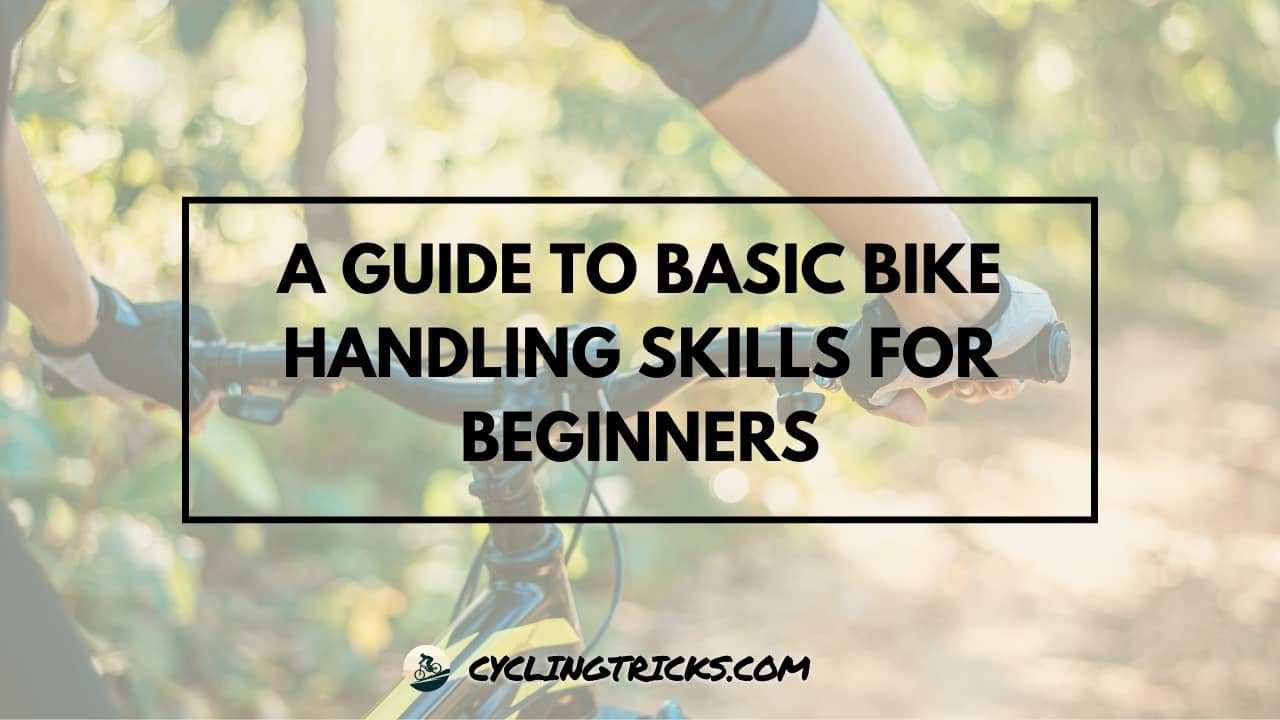Today, we’re diving into a topic that’s crucial for every rider: understanding how those bike gears actually work. So, buckle up (or rather, pedal up) because we’re about to unravel the mystery behind the gears on your beloved bicycle.
Now, you might be wondering, “Why should I bother knowing about bike gear?” Well, imagine this – gears aren’t just those metallic things on your bike; they are the unsung heroes that make your ride smoother, faster, and more efficient.
In this quick guide, we’re going to break down the basics. No fancy jargon or technicalities, just plain talk. By the end of this journey, you’ll not only comprehend how bike gears operate but also pick up some tips on proper shifting and caring for your trusty gears.
So, whether you’re a seasoned rider or just starting out, let’s pedal into the fascinating world of “How Do Bike Gears Work?
What are the Gears on a Bike?

Let’s get down to the nitty-gritty – what exactly are these gears on your bike, and why should you care?
Imagine gears as the secret sauce of your cycling experience. They’re the magical components that determine how easy or hard it is to pedal. Picture it like this: you’re cruising along, and suddenly you hit a hill. Without those gears, you’d be pedaling like mad but not really getting anywhere.
So, here’s the lowdown: bike gears are the different-sized cogs on your bike – those round things near your pedals and on the rear wheel. When you shift gears, you’re basically choosing how much power you want to put into each pedal stroke.
It’s like having a toolbox for your ride. Need more oomph to conquer that hill? Shift to a lower gear. Cruising down a smooth road? Time for a higher gear to let those wheels roll effortlessly.
In a nutshell, bike gears give you the control to adapt to various terrains and conditions. They’re your sidekick, making sure your ride is as enjoyable and effortless as possible.
Importance of Bike Gear
Now, you might be thinking, “Why bother with all this gear stuff?” Well, here’s the scoop – bike gears are like the superheroes of your ride, quietly working behind the scenes to make cycling a breeze.
Think of it this way: without gears, every hill would feel like climbing a mountain, and cruising on a flat road would be a constant struggle. The magic lies in the ability to control how easy or hard it is to pedal, thanks to those trusty gears.
Picture this scenario: you’re out on a ride, and you encounter a slope. Without gears, you’d be huffing and puffing, wishing for some sort of cycling miracle. But with gears, it’s a game-changer. You can effortlessly adjust, tackling the incline with ease.
Gears give you the power to tailor your ride to your liking. Want to speed down the road with minimal effort? Shift up. Need more power to conquer a challenging path? Shift down. It’s like having a personal assistant for your pedals!
In essence, understanding and appreciating your bike gears can turn a potentially exhausting journey into a joyous adventure. So, let’s embrace the importance of these unsung heroes and make every ride a smooth, enjoyable experience.
How Do Bike Gears Work?
Time to demystify the gears on your bike! Let’s keep it simple and straightforward.
Imagine gears as your bike’s secret sauce for adjusting difficulty levels. When you twist that gear shifter, you’re essentially telling your bike, “Hey, let’s make pedaling easier or a bit more challenging.”
Here’s the scoop: your bike has gears in the front (by the pedals) and at the back (on the rear wheel). These gears come in different sizes – big ones and small ones. When you shift gears, you’re telling your bike to use a different combo of these sizes.
Now, the magic happens when you understand the basic rule: big gears in the front for speed, small gears for power. It’s like having a mini-mechanical team that adjusts to your cycling needs.
Going uphill? Shift to a smaller front gear for more pedal power. Cruising on a straight road? Try a bigger gear for a smoother, faster ride.
In a nutshell, bike gears let you customize your cycling experience. You’re the boss, and the gears are your loyal employees, making sure each pedal stroke feels just right.
Tips for Proper Bike Gears Shifting

Now, let’s talk about shifting gears like a pro without getting into the nitty-gritty. Keep it simple, and I’ll make sure it’s crystal clear.
Listen to Your Bike:
Ever heard your bike making a bit more noise than usual? That’s a sign! If it’s struggling, shift to an easier gear.
Anticipate the Terrain:
Before hitting that hill or cruising downhill, give your gears a heads-up. Shift in advance for a smoother ride.
One Gear at a Time:
No need to rush. Shift one gear at a time, allowing your bike to catch up without any hiccups.
Mind Your Chain:
Keep an eye on your bike chain. If it’s jumping or making a fuss, chances are your gears need a gentle adjustment.
Avoid Cross-Chaining:
Don’t stress your bike out! When in the big front gear, stick to the bigger rear gear. The same goes for the small ones.
Experiment and Learn:
Take your bike to an open space and play with the gears. Get a feel for how they respond. It’s like getting to know a new friend.
Use Gears for Comfort:
Your gears are there to make your ride comfy. If it feels too hard or too easy, don’t hesitate to make a quick shift.
Practice, Practice, Practice:
Like any skill, gear-shifting gets better with practice. So, don’t be afraid to hit the road and experiment.
Gear-Shifting Tips Comparison Table:
| Tip Number | Shift Listen | Anticipate Terrain | One Gear at a Time | Mind Your Chain | Avoid Cross-Chaining | Experiment and Learn | Use Gears for Comfort | Practice Regularly |
|---|---|---|---|---|---|---|---|---|
| 1 | ✓ | ✗ | ✓ | ✓ | ✗ | ✗ | ✗ | ✓ |
| 2 | ✗ | ✓ | ✓ | ✗ | ✓ | ✗ | ✗ | ✓ |
| 3 | ✗ | ✗ | ✓ | ✓ | ✓ | ✗ | ✗ | ✓ |
| 4 | ✗ | ✗ | ✓ | ✓ | ✗ | ✓ | ✗ | ✓ |
| 5 | ✗ | ✗ | ✓ | ✓ | ✓ | ✗ | ✗ | ✓ |
| 6 | ✗ | ✗ | ✓ | ✓ | ✗ | ✓ | ✗ | ✓ |
| 7 | ✗ | ✗ | ✓ | ✓ | ✗ | ✗ | ✓ | ✓ |
| 8 | ✗ | ✗ | ✓ | ✓ | ✗ | ✗ | ✗ | ✓ |
How Do I Care Bike Gear?
Alright, let’s chat about giving some love to your bike gear. It’s easier than you think, promise!
Keep it Clean:
Dirt is not your gear’s friend. Wipe them down regularly, especially after a muddy adventure. Clean gear is happy gear.
Lubricate Like a Pro:
A bit of oil goes a long way. Add a drop to each moving part of your gears. Smooth and silent – just how we like it.
Check for Wear and Tear:
Give your gears a quick once-over. Any signs of wear or bent teeth? If yes, it’s time for a little maintenance.
Mind Your Chain:
Your chain is like the messenger between gears. Keep it clean and well-lubricated for seamless communication.
Handle With Care:
When shifting gears, don’t be too harsh. A gentle touch is all it takes. Your gears will thank you with a longer life.
Regular Tune-Ups:
Treat your bike to regular check-ups. A professional eye can spot issues before they become problems.
Store Smart:
If your bike hibernates during winter, store it in a dry place. Moisture is not a friend to your precious gear.
Listen to Odd Noises:
Weird sounds? Investigate. Sometimes, a simple adjustment can save your gear from unnecessary wear.
What Happens if I Don’t Know That How Do Bike Gears Work
Curious about what could go haywire if you’re in the dark about your bike gears? Let’s break it down without any bike jargon.
Understanding bike gears might seem like a small detail, but it plays a big role in your cycling experience. Without this knowledge, you might find yourself in a few tricky situations.
Ever felt like you’re pushing your bike through quicksand? Not understanding gears can turn a gentle slope into a pedal-pushing nightmare. It’s like trying to swim against the current – exhausting and not much progress.
Imagine pedaling without the magic of gears. Your energy drains faster than you can say “bike ride.” Gears help you pedal smarter, not harder. They distribute the effort, making your ride more efficient and less tiring.
Hills become your cycling nemesis. Without gear knowledge, you’re left grappling with steep inclines, making each climb feel like an Everest expedition. It’s not just about strength; it’s about using gears to your advantage.
Speed demons, beware! Gears aren’t just for show. Without the know-how, controlling your speed becomes a game of chance. Suddenly, you’re zooming when you want to slow down and crawling when you want to fly.
Shift in the wrong way, and your bike might rebel. Without understanding gears, you risk unnecessary wear and tear, leading to unexpected repairs. It’s like driving a car without knowing how to change gears – you might end up with a stalled engine.
Picture this: your ride should be a breeze, but instead, it’s a frustration fest. Gears are the key to an enjoyable cycling experience. With a little know-how, you can transform potential cycling headaches into moments of pure joy.
Cycling should be all about fun and freedom. Without grasping the gears’ role, you might miss out on the true joy of effortless rides. It’s like having a bike but not taking it out for a spin – a missed opportunity for adventure.
FAQs
How do I know when to shift gears on my bike?
Listen to your bike; if it’s working hard or making more noise, it’s probably time to shift to an easier gear.
Can I shift multiple gears at once?
It’s best to shift one gear at a time to ensure a smooth transition and avoid stressing your bike.
What happens if I don’t shift gears while cycling?
Without shifting, you may struggle on hills, waste energy, and miss out on the efficiency gears provide.
How often should I clean and lubricate my bike gears?
Regularly wipe down and lubricate your gears, especially after muddy rides, to keep them running smoothly.
Can I use the same gear for uphill and downhill cycling?
It’s better to use lower gears for uphill climbs to conserve energy and higher gears for downhill speed control.
Conclusion
In conclusion, unlocking the mysteries of how bike gears work isn’t just a matter of mechanical understanding; it’s the key to enhancing your entire cycling experience. We’ve learned that these seemingly simple components play a significant role in determining the ease of your ride, affecting everything from conquering hills to controlling speed.
By comprehending the basics of bike gears, you empower yourself to navigate different terrains effortlessly. Without this knowledge, you risk turning a smooth ride into a strenuous effort, draining your energy, and missing out on the sheer joy of cycling.
Moreover, neglecting to grasp the intricacies of gear shifting can lead to unnecessary challenges, potential damage to your bike, and a host of frustrating situations. Gears are not just technical components; they’re your allies, offering a smoother, more enjoyable ride when handled with care.
So, let’s not overlook the importance of this fundamental aspect of cycling. Whether you’re a seasoned rider or just starting, understanding and caring for your bike gears can transform your journey from a potential uphill battle into a delightful adventure. Gear up, ride on, and enjoy the freedom of the open road!









